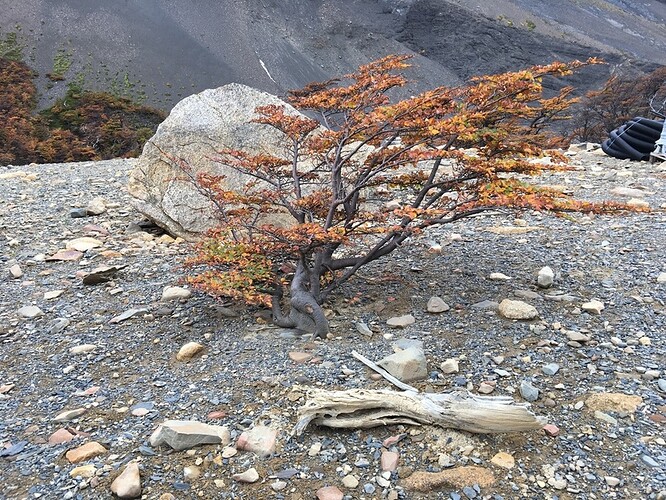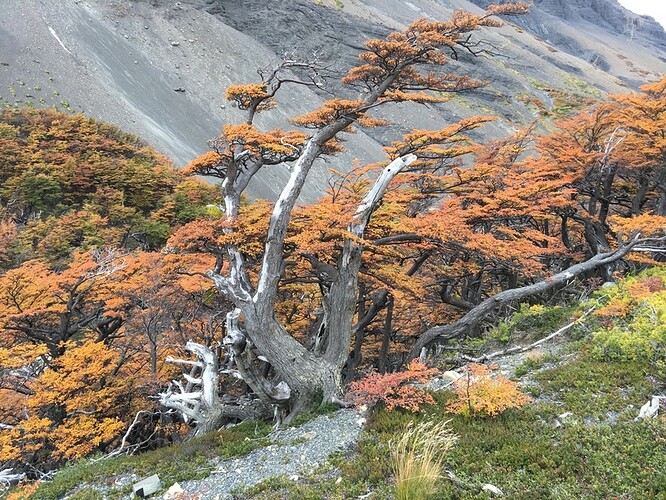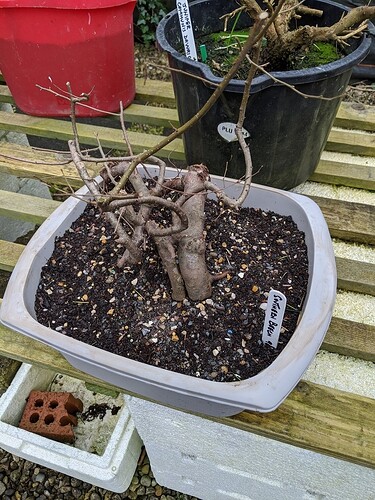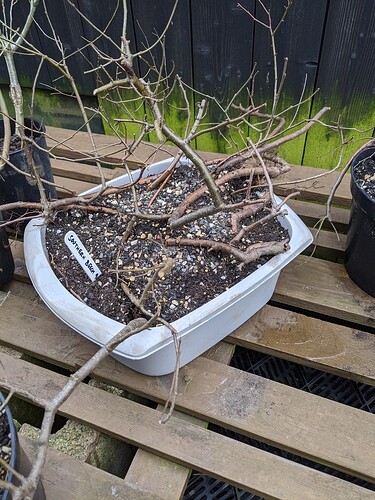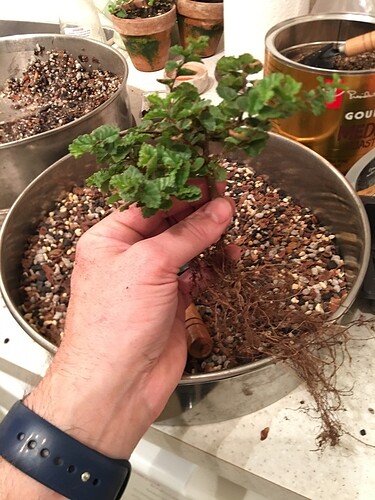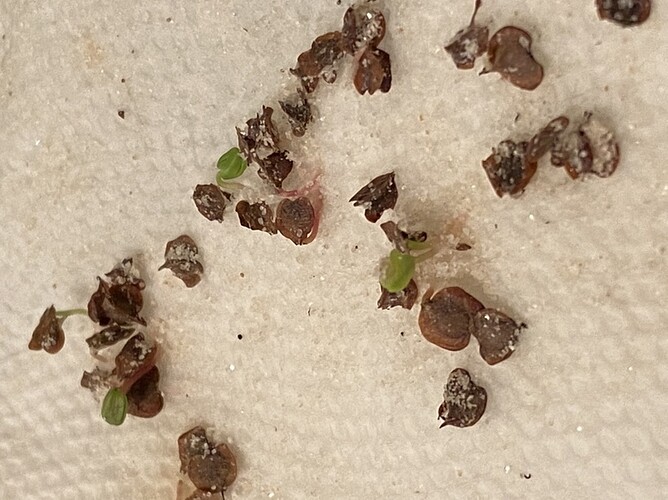New member first topic post - just wondering if there is anyone here with experience growing and styling nothofagus species. I fell in love with the trees after a visit to Patagonia a couple years ago. I have successfully grown some N antarctica seedlings from seed after a couple false starts and have learned a few of their foibles along the way (ericaceous soil is a must for eg) but wondering if anyone has other tips. I have seeds from other Nothofagus species (dombeyi, pumilio, obliqua, alpina, cuninghamii, gunii) currently stratifying or planted. Have taken a couple dozen cuttings from my N a seedlings as well to see if I an propagate that way. MTIA for any shared experience or tips.
I haven’t got any useful information to share but I am hoping to buy one tomorrow. I tried to buy it about a month ago but the owner wasn’t sure if it was still alive because it lost all its leaves very suddenly early fall. If the buds have swollen I will be buying it. He ground grew a few around 20 to 30 years ago and has two left. A large one and a smaller one. The large one is not is for sale yet so fingers crossed that the buds have swollen on the other.
That’s really cool, is it N antarctica? Please post pics of one or both if you can, you don’t see many online. I’m also curious about what kind of soil he maintains them in. I nearly killed my seedlings off before I discovered that they need acidic soil to grow in. Saved them all with an emergency bare rooting and transplant into Miracle-Gro African violet soil which happens to have about the right pH for them (~5.8). They are growing pretty well in a mix of that and a pH 5.8 bonsai soil mix I found. I make sure the water I use is around that pH as well (pretty easy to do once you know the pH of your water supply and how much vinegar to add to it if you need to lower it). Without that they get chloritic and the leaves yellow and fall off.
I found this species interesting, as well. Waiting for seeds to come up in the greenhouse right now, in fact (N Antarctica). I’ve never seen a live specimen, only pictures. @Anthony can you say what you found so interesting in a mature tree? What kind of bark? Are they twiggy and ramified?
Let’s keep this thread going! Species specific info is so helpful!
Going to upload a few pics here from my Patagonia trip that don’t entirely do the tree justice. Also important to point out that some of the trees in these pics (the larger ones) are likely N pumilio which makes up the ‘Lenga’ forest in the Patagonian mountains, I discovered that after getting back from the trip and doing a bit of research. The qualities I fell in love with are the naturally twisted state the trees grow into in the mountains, the ramification and the tiny leaves. Seemed like a natural species to work well into bonsai. The bark is smooth and reminds me a bit of birch twigs.
As for growing from seed, I’ve had a couple rounds of this, initially I had some germinate and then die a few months later. A few lessons learned - only plant seeds that sink during scarification (24-72 hours in room temp water); 60 days stratification in the cold and damp seems adequate; acidic soil as I mentioned above (although I don’t think that is initially necessary when the are germinating), I nearly killed all mine when I replanted my months old seedlings into a mix of seedling potting soil and worm castings, I found out later that worm castings have relatively basic pH.
I have 13 seedlings going and they have been growing under lights inside for about 12 months (with a bit of time spent outside last summer). They tend to grow in a very wiry, shrubby way with bar branches so I will be more proactive about pruning growth early on with the next batch to have them develop into easier to manage structures.
Most of mine are still in (acidic) potting soil but I have a few that are in an acidic bonsai soil mix (Bonsai Jack’s Organic Conifer soil - pH 5.8). I transplanted two trees that were doing very poorly (even in the acidic potting soil) into that at one point and it saved them. I tried BJ’s pH 5.5 succulent mix for another two struggling one of them died and the other was salvaged into the organic conifer mix and is now doing pretty well. I’m planning to transplant all of them into this soil mix shortly. In my initial plantings I mixed it 1:1 with the acidic potting soil that the others were growing into but I’m confident enough now that it works that I’m going to forego adding that additional organic material. I will likely add in some small sized regular bonsai mix though to help develop fine root structure since the BJ product is medium sized and these are still very small trees.
I recently pruned the trees that were thriving and took a couple dozen cuttings to see if I could propagate that way. will update this thread on that experiment as it develops.
I’m concerned that these trees may need some type of mycorrhizae natural to their local environment to really thrive but I obviously don’t have any access to that living in Toronto. I read through some academic papers published by a few groups in Chile and Argentina about this to see what species of microbes are commonly associated with these trees and there is some genus commonality between those and species associated with some types of Canadian trees so I’m planning on taking some root soil samples this summer from different kinds of trees and spiking the soil my seedlings are in to see if this helps improve vigour.
The other main worry is that I have not allowed them to go dormant yet so I’m facing a decision this fall about how to winter them. I don’t have access to a cold room that will maintain a root-safe temp, going to have to figure that out and whether to just bite the bullet and bury the pots in my back garden under a cold frame and hope they survive.
So I managed to get some pics. He had a whole load of seeds pre-stratified sent over from Chile in 1996 and planted the seedlings into the ground where they have had to compete with lots of other tress, pants and shrubs. This is the most refined one that isn’t for sale at present. Apart from being pruned back every few years and there roots cut back every few years they have had no work in the field.
This is the one I had hoped to buy, but the buds have not developed and it is almost certainly dead. I had hoped to have it as a cascade on it’s side like it was growing out of crack in the rocks.
Here are a few more younger looking ones that have just been lifted from the ground (I am not sure if these were planted back in 1996 or they have self seeded since.
This is the one that I ended up buying, again just lifted from the ground.
Sorry for the poor quality photo, I’ll get some better ones tomorrow when it’s daylight. Definitely seems to have a creeping ground growth habit and it seems to ground layer all over the place judging from the amount of root. The bark is similar to birch and the leaves are tiny.
WOW! Those trees growing in the rocky hillsides are amazing. I can see why you were intrigued by their shape, foliage distribution and overall ruggedness.
Thanks for sharing those and all of your experience with the seedlings. I will keep this in mind as mine sprout (hopefully) this spring and I start the journey of keeping them alive and developing them in usable trees.
P.S. I am also a big fan of the BonsaiJack mixes. Although I’ve been experimenting with lave from the local landscape rock supplier as a much cheaper alternative for collected trees and less expensive stock, the rest of my trees are in BJ mixes. Love the work he has done on moisture retention and availability as well as Ph values.
https://www.bonsaijack.com/blog/bonsai-soil-aggregate-test-report-2014/
Thanks for posting those pics @Twisted, so fascinating to see nursery stock for this tree. Definitely keep working on him for that larger specimen, loads of potential there. Looking at how my seedlings are growing, I can definitely trace forward from that the some of the shapes in the various specimens in you pictures and yes, I was also thinking about a cascade for several of mine (in fact have been planning to plant a couple into some tiny pots and train up as cascade mame trees). I’m intrigued by the observation that they may be ground layering. See if you can confirm that when you go back. They grow so low to the ground (and you often have multiple trunks emerging at ground level) that I could see it looking like a ground layer even if it has not developed secondary roots. It might be cool to try a raft style planting with this one, I hadn’t considered that before.
@Andy2Sheds (btw I’m jealous,currently I could be accurately described as Anthony0Sheds), you’re most welcome, I haven’t been able to share this stuff before, v happy to find others with similar interests here. Are your seeds currently stratifying? How many seeds? What stage are they at and what technique are you using for it? I usually put mine into a ziplock with a mix of damp perlite, crab sand and sphagnum moss. They can be v hard to see in the sphagnum however since they are such tiny seeds so for these I’m mostly just using sand and perlite.
Edit - @Twisted, I meant to comment on the ?dead tree too. I have found that these guys back bud very easily and can also be quite sensitive to drying out. Recently I had one that was in a hot area in my grow table that dried and defoliated on me. I treated it like a cutting, took all the dead leaves off, rehydrated the soil, stuck a bag over it (later placed it under a cloche with the vent closed), and subsequently cut back the branches that were clearly shriveled/dead. A week and a half later I have multiple new leaves sprouting near around is original initial branch point. I would not give up on that one until you get a month or two beyond spring, it might come back. Maybe you can convince him to give it to you for a fiver 
I have 25 or so planted in a peat based seed starting mix in the greenhouse. They’ve been out there most of the winter hovering between 32F and 40F. Hoping to see them wake up pretty soon.
Tempted to lift them as they emerge and plant them in individual pots but may only move 50% of them and wait on the rest until next spring? Not sure how fast they grow.
Repotted several of my N antarctica trees a few days ago into completely free draining soil from 100% organic, the pics below give you an idea of root growth and trunk thickness developed from seed over the course of 1 year of continuous growth. They were last repotted about 8 months ago …
A bit worried about how they will respond since they have not been allowed to go dormant over the winter and my previous successful repots of other trees were into 50/50 organic/free draining. Half of these were potted into soil that have been supplemented with with about 10-15% kanuma to see if that helps them since they are acid loving.
Still, even if they tank, I’m pretty sure I can rescue them, below is a tree that accidentally got desiccated in a hot part of my light table and was subsequently defoliated, then pruned back, and left under a cloche to maintain humidity levels. It generated buds near the division of its first branches quite robustly. This is it about two weeks later, tons of little leaves sprouting, I’ve already pinched off a few in undesirable spots, will likely make a nice mame broom style tree …
For those attempting to grow from seed, I can confirm that the damp paper towel method works at least as well as planting stratified seeds in soil, at least for N antarctica and N. obliqua (both standard and “mirb” variant).
I scarified all for 24-48 hours in water, adding any seeds that sank to ziplocks containing a mix of damp perlite/hermit crab sand/sphagnum moss and then stratified in those bags for about 2 and a half months in a fridge. Then divided the seeds, half put on damp paper towel in ziplock and half planted in mix of perlite and miracle gro seedling starter soil, ’mulched’ with damp perlite on top. Both the soil tray and paper towel bags were placed on a warm light table (temp range ~18-26° C, 16 hrs per day light) Germination observed in about 10-14 days)
Image is of N antarctica seeds on paper towel.
Thought I would post an update on the potential for growing these trees from cuttings.
As far as I’m aware, N antarctica is not a species that can be propagated this way, but I thought I would give it a try and see what happened. I struck some cuttings about 2 months ago into a 1:1:1:1 mix of miracle gro seedling/rooting soil: miracle grow African violet soil: Bonsai Jack organic conifer mix pH 5.8: vermiculite). Dipped cuttings in MG FastRoot powder). I think I had 21 to start. They were left under a cloche.
About a month and a half in it was not looking promising. Most had died, a few looked like they were still potentially viable.
but now 2 weeks after that the ones that looked like they might live seem to be quite vigorous. Pushing out new growth tips and leaves (also I added some new cuttings to one of the pots today)
Fingers crossed. Haven’t had the courage to pull them out and inspect for roots yet but probably will in a month or two. This is my first try growing anything from a cutting so if anyone has advice about timing for transplanting I’m all ears.
Seems like these are extremely hard to find in the US! I’ve been searching for N. Antarctica but can only seem to find seeds, which I have ordered. It would be amazing to find a source for some nursery stock here in California. Anyone have any leads?
I do realize that probably the reason they aren’t available here is that the climate doesn’t suit the species very well. However, we are developing a ‘cloud forest’ greenhouse and I’m hopeful they might thrive in that humid condition. Any further clues would be appreciated!




